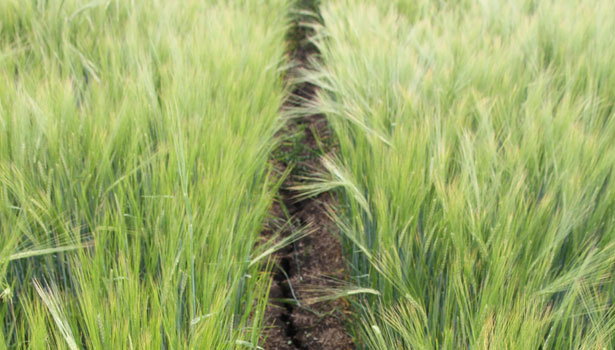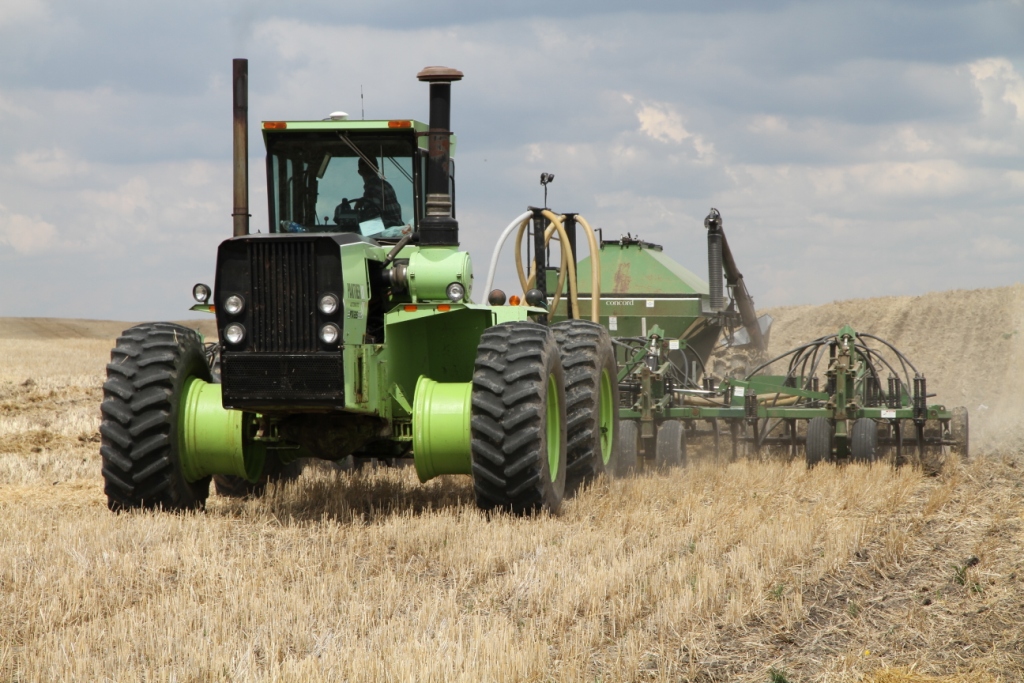 |
|
In 2010 Mitch, Sam and I began modifying our equipment to begin controlled traffic farming in 2010. After the tremendous benefits I documented on my overseas travels, I felt there was no time like the present to begin controlled traffic farming in our heavy clay soils. Convincing my farming partners to implement a CTF system to reduce compaction wasn't easy but asking them to take a 4WD drive and put in on singles was! They've since bought in and we haven't looked back! Converting the Steiger PTA to run on 120" centres for CTF The first task of converting any dualled 4WD tractor to run on single tires is to find the right load rating. We currently have 23.1-34 bias ply tires with a load rating of 7,500 lbs per tire at 18 psi. The 4WD weighs 30,000 lbs wet so we didn't have to buy new tires, thankfully! Ideally, we could run radial tires to help carry the load, reduce tire pressure and smooth out the ride. Our budget doesn't allow for this just yet. Next, we needed to match the wheel widths on the 4WD, sprayer, air drill, air tank and combine so they would stay inside each others wheel track. By matching the wheel widths on each piece of equipment, we could bring our area of compaction down to just 16.6% of the field. The original plan was to have ten-foot center to center tire widths so we would only have to modify the 4WD and back axle on the air tank. The sprayer, combine and front axle of the air tank were already on ten-foot centers. After some head scratching, we realized we could only get down to a width of 10 ft 3 inches with our 4WD because we couldn't bring the outside rims in more than 7 inches. The concensus was to go with the 10 ft 3 inch centers on the 4WD and the other equipment tires would fall inside anyhow. The 1.5 inches per side was nothing to sweat about. Given that a Steiger has outboard planetaries, it made the modification process more difficult compared to something like a John Deere which has inboard planetaries. Inboard planetaries have axle extentions you can bolt on allowing you to run on the inside rim, which is more structurally sound than the outside rim. Running on the outside rim of an outboard planetary system meant that we'd have to cut the spacers and weld the rims together. Not easy, but totally doable!  We ripped off the tires, rims and spacers and had them sandblasted. Sam welded the stress fractures and cracks in the welds and cut four spacers down to 7 inches to fit in between the rims for added stability. The six bolts on each rim were cut down to 26 inches, rethreaded with a new nut welded on one end. We used these bolts to tighten the rims together so Sam could begin welding the two rims together. Once the welding was completed, each new rim was painted lovely Steiger green. The next step was to put the four new rims back on the planetaries after replacing the seals and to finish painting the rims while we could spin them on the hub. Thankfully, all the planetaires were sound. Our friends at Kal tire put the tires back on but this time we left the calcium out. We chose not to put calcium back in for two reasons: 1) the tractor is fairly well balasted from factory and 2) we might have to make a quick tire change if things go south on us! After an armstrong torque on the wheel nuts with a four-foot snipe, the 4WD modification to singles was complete. I think the old girl looks pretty awesome, don't you? I dare say we'll get a few looks and few comments under the breath at how nuts we are but such is life in the name of progress. |





